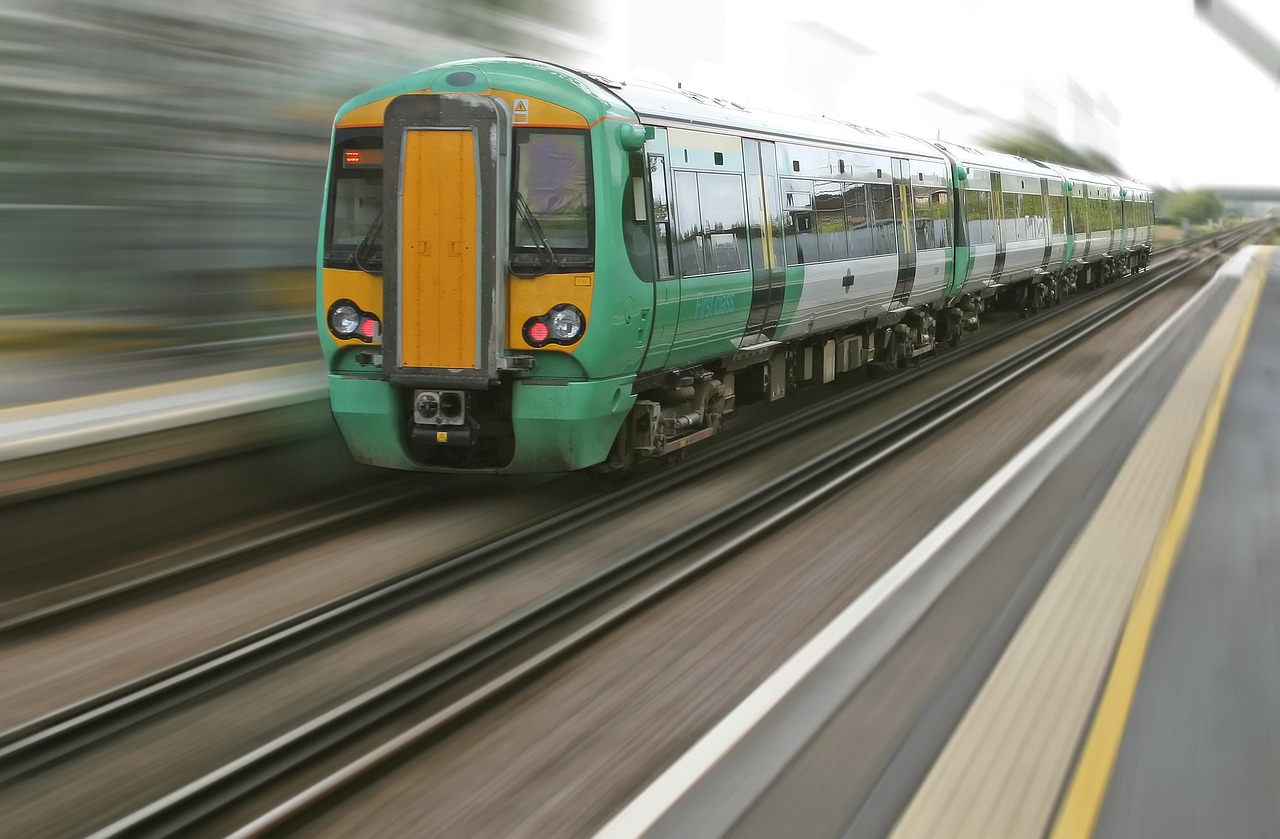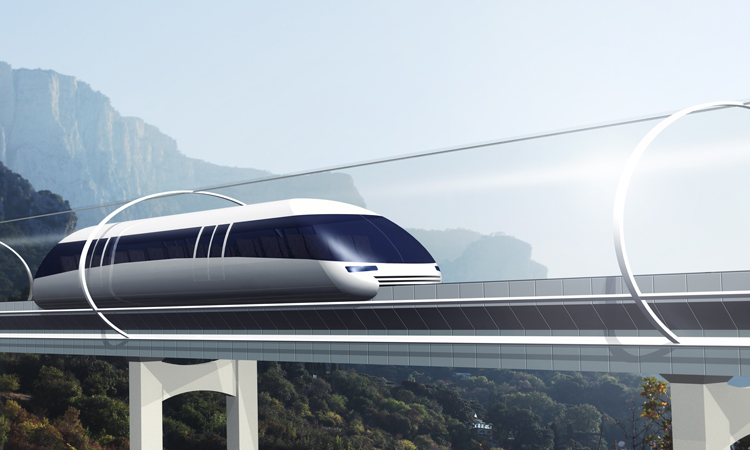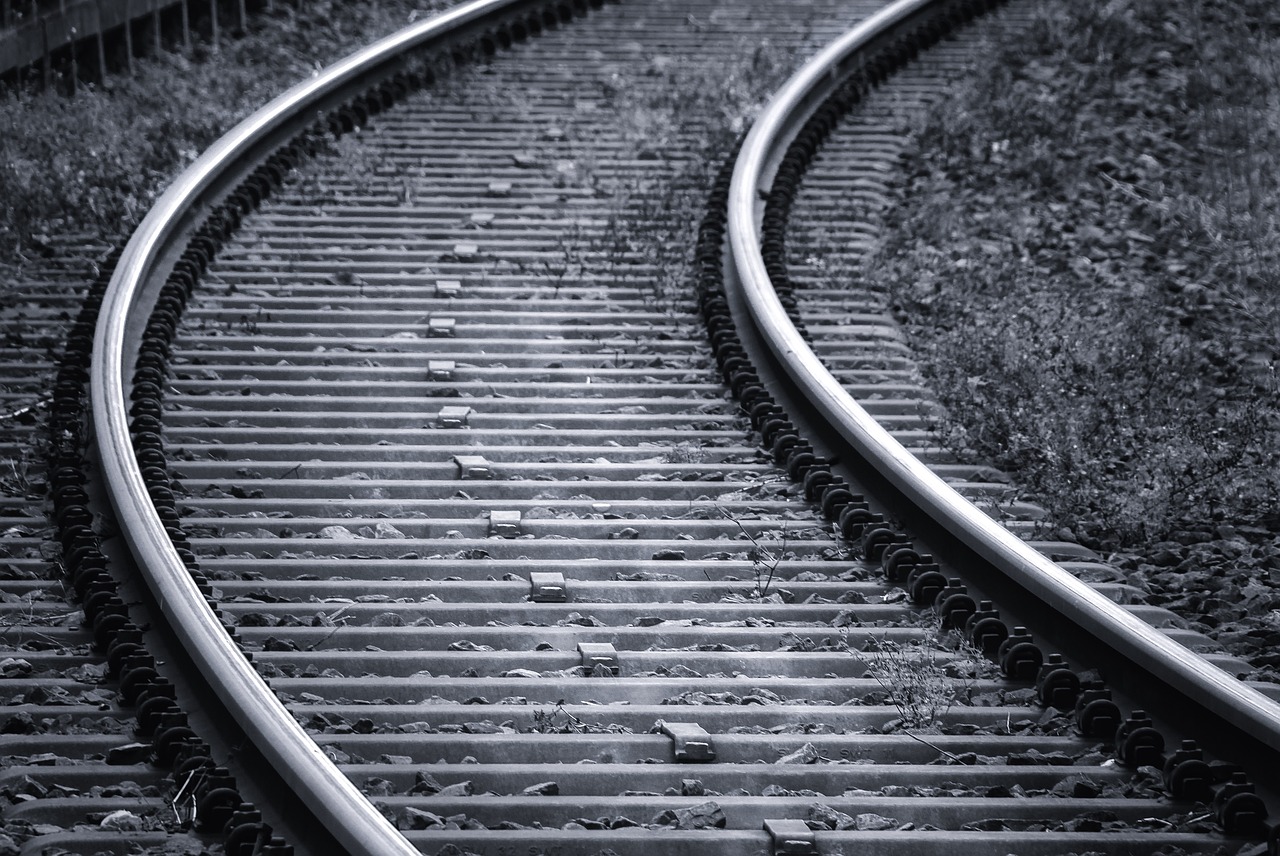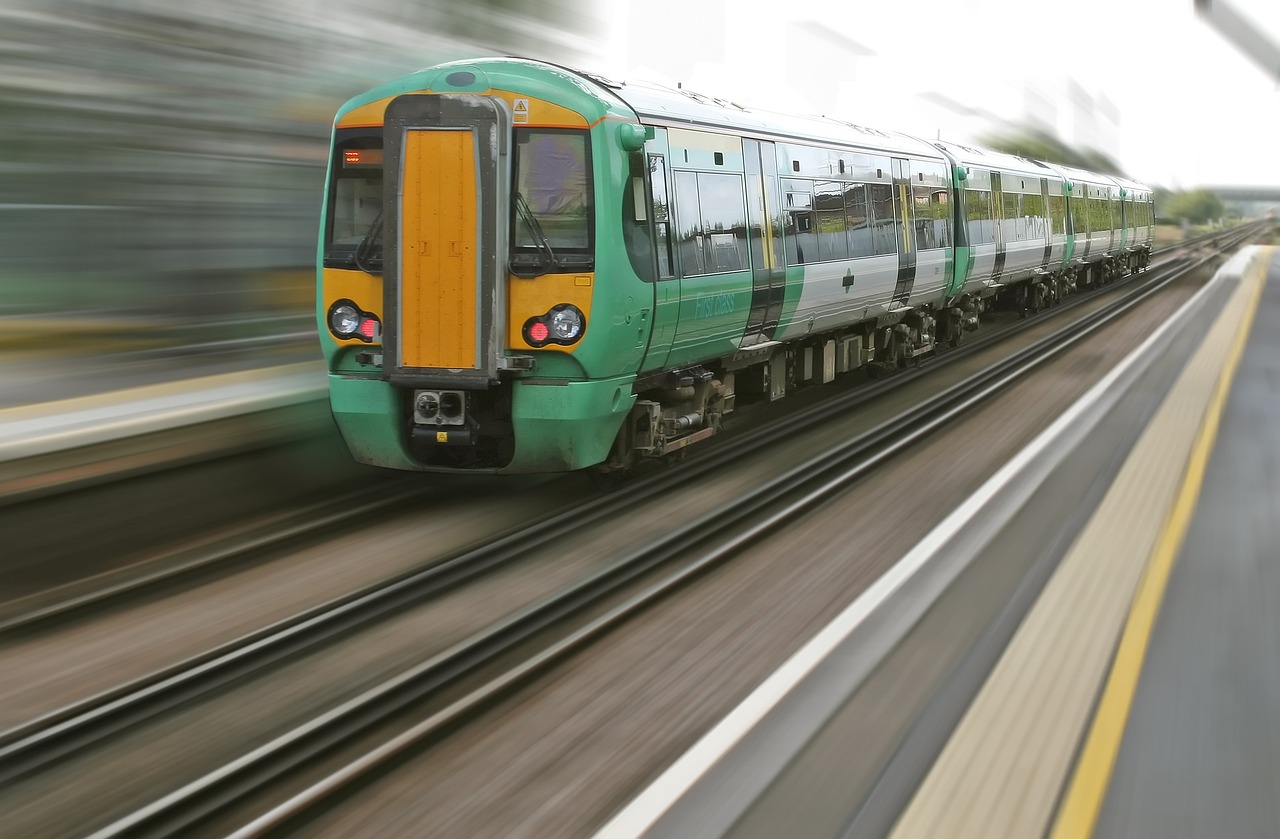Table of Contents
Interpretation
The world of transportation is on the cusp of a revolutionary transformation and at its forefront is the innovative concept of hyperloop technology. Emerging as a promising mode of rapid transit, hyperloops offer the potential to redefine the future of rail travel. In this article, we delve into the exciting world of hyperloop technology, exploring its origins, capabilities and the transformative impact it may have on the way we move.
The world of transportation is on the cusp of a revolutionary transformation and at its forefront is the innovative concept of hyperloop technology. Emerging as a promising mode of rapid transit, hyperloops offer the potential to redefine the future of rail travel. In this article, we delve into the exciting world of hyperloop technology, exploring its origins, capabilities and the transformative impact it may have on the way we move.
Origins of Hyperloop: The hyperloop concept was first proposed by Elon Musk in 2013 as a response to the challenges of urban congestion and the need for more sustainable transportation options. Musk envisioned a system of low-pressure tubes through which passenger pods could travel at high speeds, powered by electromagnetic propulsion.
How It Works: At its core, a hyperloop operates by reducing air pressure inside a tube to minimize aerodynamic resistance. This near-vacuum environment allows pods to move with minimal friction, achieving speeds that rival those of commercial airplanes. Magnetic levitation (maglev) technology, similar to what’s used in some high-speed trains, keeps the pods off the ground and allows them to glide smoothly through the tube.
Speed and Efficiency: Hyperloop systems have the potential to reach incredible speeds, potentially exceeding 700 miles per hour (1,100 kilometers per hour). This unparalleled velocity could transform long-distance travel, reducing journey times between cities from hours to mere minutes. Such efficiency has the potential to make hyperloop transportation a game-changer for commuters and travelers alike.
Sustainability: Hyperloops could be among the most sustainable modes of transportation. The use of electric propulsion, coupled with renewable energy sources, could make hyperloops virtually emission-free. Additionally, the small physical footprint of the infrastructure minimizes land disruption compared to traditional rail or highway systems.
Transformative Impact: Hyperloops have the potential to reshape urban planning and the way we think about commuting. They could connect cities that were once considered too far apart for daily commuting, effectively expanding the reach of metropolitan areas. This, in turn, could ease congestion in city centers and reduce the environmental impact of long-distance commuting.
Challenges and Development: While the promise of hyperloop technology is exciting, there are still significant technical, regulatory and financial challenges to overcome. Numerous companies and organizations worldwide are actively working on developing functional prototypes and addressing these hurdles to make hyperloops a reality.
The Future of Rail Travel: As we stand on the brink of a new era in transportation, the potential of hyperloop technology is awe-inspiring. It has the capacity to revolutionize the way we move, bringing distant cities closer together, reducing travel time and contributing to a more sustainable future. While there are hurdles to overcome, the world eagerly awaits the day when hyperloops become a part of our daily lives, transforming the landscape of rail travel forever.
For a comprehensive look at this subject, we invite you to read more on this dedicated page: The Next Frontier of Growth – Women as Corporate Customers

The Birth of Hyperloop
A Visionary IdeaThe hyperloop concept was first introduced to the world by Elon Musk in 2013. Musk’s white paper outlined a vision for a new mode of transportation that could propel passenger pods at near-supersonic speeds through low-pressure tubes. This concept immediately captured the imagination of engineers and innovators around the globe.
Elon Musk’s introduction of the hyperloop concept in 2013 marked a watershed moment in the world of transportation innovation. Musk’s white paper wasn’t just a technical proposal; it was a visionary call to reimagine the way we move. The audacious idea of whisking passenger pods through near-vacuum tubes at nearly supersonic speeds captured the collective imagination of engineers, scientists and innovators worldwide.
Revolutionizing Travel: Musk’s vision dared to challenge the status quo of conventional travel. He sought to transcend the limitations of existing transportation systems, offering a solution that could drastically reduce travel times and redefine our understanding of distance. The prospect of traveling from city to city in a matter of minutes rather than hours was a tantalizing proposition that left experts and enthusiasts alike in awe.
Inspiring a Global Community: The release of Musk’s white paper sparked a global conversation and inspired a community of passionate individuals dedicated to making hyperloop technology a reality. Entrepreneurs, engineers and researchers from various disciplines united under the banner of this audacious vision. Competitions and collaborations emerged as teams sought to develop and refine hyperloop concepts.
Open-Source Innovation: Musk’s decision to make the hyperloop concept open-source further fueled innovation. This approach encouraged collaboration and allowed diverse teams to contribute their expertise. The open nature of the concept meant that progress was not confined to a single organization but rather propelled forward by a worldwide community of problem solvers.
Pushing Technological Boundaries: Hyperloop technology challenges the boundaries of what is technically possible. It involves creating a low-pressure environment within tubes, developing cutting-edge propulsion systems and ensuring the safety and comfort of passengers traveling at unprecedented speeds. The technical challenges posed by hyperloop have driven engineers and scientists to push the limits of innovation.
A Catalyst for Transportation Innovation: Beyond the hyperloop itself, Musk’s vision has served as a catalyst for broader transportation innovation. It has prompted discussions about the need for high-speed, sustainable and efficient transportation solutions in an increasingly interconnected world. Concepts like the hyperloop have spurred investment and research in related fields, contributing to the development of novel transportation systems.
In essence, Elon Musk’s introduction of the hyperloop concept was not just an idea; it was a catalyst for a global movement. It challenged preconceived notions of what was possible in transportation, inspired a passionate community of innovators and accelerated the pursuit of high-speed, sustainable transit. While the road to realizing the hyperloop vision is still filled with challenges, its legacy is already evident in the transformative impact it has had on the way we envision the future of transportation.
If you’d like to dive deeper into this subject, there’s more to discover on this page: The future of transportation: Where will we go? | Geotab

Hyperloop Mechanics
The Science Behind the SpeedAt the core of hyperloop technology is a system that combines magnetic levitation (maglev) and reduced air pressure to eliminate friction and resistance. This allows passenger pods to travel at extraordinary speeds, potentially exceeding 700 mph (1,100 km/h). The vacuum environment within the tubes reduces air resistance to almost negligible levels.
The Science Behind the Speed: Unlocking the Hyperloop’s Potential
The concept of the hyperloop represents a bold leap into the future of transportation, promising unparalleled speeds and efficiency. To fully appreciate the marvel that is the hyperloop, it’s essential to delve into the intricate science that underpins this revolutionary mode of travel.
At the heart of hyperloop technology lies a meticulously designed system that seamlessly integrates two key elements: magnetic levitation (maglev) and the manipulation of air pressure within a vacuum environment. Together, these components work in harmony to eliminate friction, minimize resistance and propel passenger pods at mind-boggling velocities, potentially exceeding 700 mph (1,100 km/h).
Magnetic levitation or maglev, is the first pillar of this innovative transportation system. Unlike conventional wheeled vehicles, maglev technology relies on powerful magnets to lift the passenger pod slightly above the track, effectively eliminating physical contact and friction. This hovering effect creates a near-frictionless environment, allowing the pod to glide with minimal energy loss. The absence of wheels and traditional rail contact not only reduces wear and tear but also ensures a smooth and noiseless ride, enhancing the passenger experience.
Complementing maglev technology is the manipulation of air pressure within the hyperloop’s sealed tubes. The creation of a low-pressure environment virtually eliminates air resistance, a formidable adversary to high-speed travel. As the passenger pod hurtles through the tube, the absence of air molecules to push against results in almost negligible resistance. This fundamental principle of aerodynamics enables the pod to achieve previously unthinkable speeds while requiring minimal energy to maintain its velocity.
To put the significance of reduced air pressure into perspective, consider that in a traditional environment, air resistance increases exponentially with speed. As a vehicle accelerates, it must overcome increasingly formidable air resistance, consuming more energy and limiting its speed potential. However, within the hyperloop’s vacuum tubes, this barrier is effectively removed, ushering in a new era of efficient, high-speed transportation.
Beyond the incredible speed and efficiency, the hyperloop’s reduced reliance on fossil fuels makes it an environmentally friendly mode of travel. The absence of direct emissions and the potential for renewable energy sources to power the system align with the global drive towards sustainable transportation solutions.
As we continue to explore the frontiers of transportation, the science behind the hyperloop serves as a testament to human ingenuity and innovation. It challenges the conventional boundaries of speed, efficiency and sustainability, offering a tantalizing glimpse into a future where distance becomes virtually irrelevant and the world is more interconnected than ever before.
In conclusion, the hyperloop’s fusion of magnetic levitation and vacuum technology is a triumph of scientific and engineering prowess. This groundbreaking transportation system holds the promise of transforming the way we travel, unlocking speeds that were once the stuff of science fiction. As research and development continue, the hyperloop stands on the cusp of revolutionizing the future of transportation, reshaping the way we perceive distance and ushering in a new era of high-speed connectivity.
If you’d like to dive deeper into this subject, there’s more to discover on this page: Bjarke Ingels Group: BIG
Redefining Efficiency
Speed and SustainabilityHyperloop technology promises a host of benefits. Its high-speed capabilities drastically reduce travel times between cities, potentially turning hours-long journeys into mere minutes. Additionally, the energy efficiency of hyperloop systems, coupled with their potential for renewable energy integration, holds promise for a more sustainable mode of transportation.
The convergence of speed and sustainability in hyperloop technology represents a revolutionary leap forward in the realm of transportation. With its potential to redefine the concept of travel time, hyperloop systems are poised to reshape our understanding of urban and intercity connectivity.
At the heart of hyperloop’s allure is its remarkable speed. The ability to transport passengers and cargo at unprecedented velocities holds the promise of a transportation revolution. What once took hours or even days to traverse between cities can now be achieved in mere minutes. Hyperloop networks have the potential to shrink the perceived size of regions, fostering greater integration between urban centers and making distant locales readily accessible for daily commutes or leisure trips.
Beyond its groundbreaking speed, hyperloop technology is making strides in sustainability, aligning with the global imperative to reduce greenhouse gas emissions and mitigate the impact of climate change. Energy efficiency is a hallmark of hyperloop systems. The use of low-pressure, near-vacuum tubes reduces air resistance to a minimum, requiring less energy to propel capsules. This inherent efficiency translates into reduced energy consumption compared to conventional modes of transportation.
Moreover, hyperloop’s compatibility with renewable energy sources presents an exciting opportunity for sustainable transit. By harnessing solar, wind or other clean energy forms, hyperloop networks can operate with minimal environmental impact. The integration of renewable energy not only reduces the carbon footprint but also contributes to greater energy independence and resilience.
The environmental benefits extend further. Hyperloop’s infrastructure has a relatively small physical footprint, minimizing land disruption and habitat encroachment. Elevated or underground tube networks have the potential to reduce the loss of valuable agricultural land and natural landscapes. Additionally, hyperloop’s quiet and vibration-free operation mitigates noise pollution, making it a more neighborly addition to urban environments.
As hyperloop technology advances and becomes a viable transportation option, it opens up exciting possibilities for urban planning and development. Cities can be interconnected in ways previously thought impossible, fostering economic growth, cultural exchange and access to diverse job markets. The reduction in commuting times can lead to improved quality of life, as individuals spend less time in transit and more time with their families or engaged in leisure activities.
In conclusion, the marriage of speed and sustainability in hyperloop technology is poised to usher in a new era of transportation. It offers the tantalizing prospect of shorter travel times and more sustainable transit solutions, aligning with our growing awareness of the need to address climate change and promote energy efficiency. Hyperloop’s potential to transform urban and intercity connectivity holds the promise of a more accessible, efficient and environmentally conscious future of transportation.
Additionally, you can find further information on this topic by visiting this page: McKinsey Technology Trends Outlook Report 2022

Connecting Cities
The Hyperloop NetworkOne of the most ambitious aspects of hyperloop technology is its potential to create a vast network of interconnected cities. This network could bridge urban centers, reduce congestion and offer a more efficient and eco-friendly alternative to short-haul air travel.
The Hyperloop Network: Pioneering the Future of Transportation
The concept of a hyperloop network is nothing short of revolutionary in the realm of transportation. Beyond its immediate benefits of reducing congestion and providing an eco-friendly alternative to short-haul air travel, the potential impact of this technology reaches far and wide:
Urban and Suburban Connectivity: The hyperloop envisions a future where cities and their suburbs are seamlessly connected, making it possible for people to live in outlying areas while easily commuting to work or leisure activities in city centers. This could alleviate urban congestion and address the challenges of housing affordability in major cities.
High-Speed Commuting: Imagine commuting between cities at speeds exceeding 600 miles per hour. The hyperloop network promises to make long-distance travel a matter of minutes rather than hours. This opens up a world of possibilities for job opportunities, regional tourism and a more connected society.
Economic Growth: The development of a hyperloop network creates jobs not only in construction but also in the maintenance and operation of these systems. It stimulates economic growth by encouraging investment in infrastructure and the development of high-tech industries related to hyperloop technology.
Environmental Benefits: Hyperloop systems are designed with sustainability in mind. They are fully electric and generate little to no direct emissions. By providing a clean and efficient mode of transportation, hyperloop networks can contribute to reducing greenhouse gas emissions and mitigating climate change.
Decongesting Air Travel: Short-haul flights are a significant contributor to airport congestion and greenhouse gas emissions. Hyperloop technology can take on a portion of this traffic, freeing up airports for long-haul flights and reducing the overall burden on the aviation industry.
Accessibility and Inclusivity: Hyperloop networks have the potential to improve accessibility for individuals who may face mobility challenges. These systems could be designed with inclusivity in mind, ensuring that people of all abilities can benefit from high-speed, efficient transportation.
Global Connectivity: As hyperloop networks expand, they could link countries and continents in ways previously unimaginable. This could foster cultural exchange, international trade and collaborations that transcend borders, redefining the concept of a global village.
Resilience and Disaster Recovery: Hyperloop networks, being elevated or underground, are less susceptible to natural disasters such as floods and earthquakes. This inherent resilience can enhance disaster recovery efforts and maintain connectivity during challenging times.
Technological Advancements: The development and deployment of hyperloop technology drive advancements in fields like materials science, automation and renewable energy. These innovations have ripple effects across various industries, spurring further technological progress.
In conclusion, the hyperloop network represents a transformative leap in transportation that extends well beyond the immediate benefits of reducing congestion and offering a green alternative to short-haul air travel. It has the potential to reshape urban planning, boost economies, enhance environmental sustainability and connect people and places in ways that were once only the stuff of science fiction. As this ambitious vision edges closer to reality, the possibilities for a more efficient, connected and sustainable future continue to expand.
Should you desire more in-depth information, it’s available for your perusal on this page: The future of autonomous vehicles (AV) | McKinsey

Overcoming Challenges
Technical and Regulatory HurdlesThe development of hyperloop technology is not without its challenges. Engineers and scientists must address issues such as safety, infrastructure construction and regulatory approvals. Additionally, securing funding for these ambitious projects remains a significant hurdle for many hyperloop companies.
In the pursuit of hyperloop technology, the path forward is fraught with a series of formidable challenges that demand careful consideration and innovative solutions. Among these hurdles, technical and regulatory concerns loom large, serving as significant barriers that must be overcome to turn the hyperloop dream into a tangible reality.
First and foremost is the matter of safety. Hyperloop systems promise to transport passengers at incredible speeds within low-pressure tubes, presenting unique engineering challenges. Maintaining passenger safety while operating at such velocities is paramount. Engineers and scientists are hard at work developing fail-safes, emergency systems and redundancy protocols to ensure that passengers can travel securely and confidently within the hyperloop environment.
Infrastructure construction is another intricate puzzle to solve. Building the massive tubes and vacuum systems required for hyperloop routes demands considerable resources and innovative engineering techniques. These systems must be designed to withstand environmental factors such as earthquakes and extreme weather conditions, ensuring the long-term reliability and safety of the hyperloop network.
Regulatory approvals represent a critical piece of the puzzle. Introducing a revolutionary mode of transportation like the hyperloop requires navigating complex regulatory landscapes that vary from one region to another. It involves coordination with multiple government agencies, addressing safety standards, land use considerations and environmental impact assessments. The successful integration of hyperloop technology into existing transportation ecosystems hinges on forging productive partnerships with regulatory bodies and policymakers.
One of the most pressing challenges faced by hyperloop companies is securing the necessary funding for these ambitious projects. The development and deployment of hyperloop systems demand substantial financial investments. While many companies have garnered interest from investors, securing the capital required to take hyperloop projects from concept to reality remains a formidable task. This includes securing both public and private funding to fuel research, development and construction efforts.
Despite these considerable challenges, the allure of hyperloop technology persists. Visionaries and innovators around the world are undeterred, leveraging their collective expertise to surmount these obstacles one by one. As progress continues to be made on the technical, regulatory and financial fronts, the dream of ultra-fast, sustainable and transformative transportation inches closer to becoming a profound reality. The hyperloop journey is a testament to human ingenuity and the relentless pursuit of a more connected and efficient future for transportation.
If you’d like to dive deeper into this subject, there’s more to discover on this page: The future of autonomous vehicles (AV) | McKinsey

Global Pioneers
Hyperloop Projects Around the WorldHyperloop technology has garnered interest from various companies and governments worldwide. Pioneering projects are underway in countries like the United States, the United Arab Emirates and India. These projects aim to make hyperloop travel a reality within the next decade.
The advent of Hyperloop technology has sparked a global race to revolutionize transportation. As we look beyond the horizon, we find a landscape dotted with pioneering projects that promise to reshape the way we perceive and experience travel.
In the United States, the birthplace of many groundbreaking innovations, several companies are at the forefront of Hyperloop development. The ambitious goal is to connect major cities with rapid, high-speed transportation networks. These projects envision a future where travelers can traverse vast distances in mere minutes, drastically reducing commute times and opening up new opportunities for economic growth and urban development. From the bustling corridors of the East Coast to the sprawling landscapes of the West, Hyperloop projects are pushing the boundaries of what’s possible in American transportation.
Across the ocean in the United Arab Emirates, the Hyperloop holds the promise of bridging not only geographical distances but also cultural and economic divides. Projects in the region aim to connect cities like Dubai and Abu Dhabi at unimaginable speeds, fostering closer ties between these vibrant hubs of commerce and culture. The desert sands that once defined isolation are now set to become the conduits of connection, demonstrating the transformative potential of Hyperloop technology in fostering global partnerships.
Meanwhile, in India, a country known for its diverse and densely populated cities, Hyperloop projects offer a glimpse into the future of urban mobility. These initiatives aim to alleviate the congestion and transportation challenges faced by millions of commuters. Hyperloop networks connecting cities like Mumbai and Pune promise to not only revolutionize daily commutes but also drive economic growth by facilitating efficient movement of goods and people.
The common thread among these projects is the shared vision of making Hyperloop travel a reality within the next decade. These ambitious timelines reflect the urgency and determination with which governments, companies and innovators are embracing this transformative technology. The potential benefits are vast: reduced carbon emissions, decongested highways and more accessible transportation options for all.
However, the path to widespread Hyperloop adoption is not without its challenges. Technological hurdles, regulatory considerations and infrastructure development are all significant factors that must be addressed. These projects require a collaborative effort between public and private sectors, as well as the support and enthusiasm of the communities they aim to serve.
In conclusion, the world is witnessing a global convergence toward the adoption of Hyperloop technology. These projects represent a profound shift in our approach to transportation, promising to make the once-futuristic dream of rapid, efficient and sustainable travel a tangible reality. As the wheels of innovation turn and the tracks of progress are laid, we stand at the threshold of a transportation revolution that will shape the way we connect, commute and explore our world in the years to come.
If you’d like to dive deeper into this subject, there’s more to discover on this page: I Used GPT4 To Travel To The 2070s: Welcome To The 2070s Time …

The Future of Rail Travel
A Paradigm ShiftHyperloop technology represents a paradigm shift in rail travel. Its potential to connect distant cities in a matter of minutes has the potential to transform the way we work, live and interact. The implications for business, tourism and daily life are vast and as the technology matures, its impact will become increasingly pronounced.
The advent of Hyperloop technology heralds a seismic shift in the realm of rail travel, redefining the very concept of distance and time. With the capability to seamlessly connect cities that once seemed worlds apart in a matter of minutes, this innovation promises to reshape the fundamental aspects of our lives.
In the realm of business, the implications are profound. Hyperloop has the potential to compress the geographical boundaries that have traditionally defined markets and industries. Companies can tap into talent pools and consumer markets previously considered out of reach, ushering in an era of unprecedented connectivity and growth. The speed at which goods can be transported presents opportunities for just-in-time logistics and supply chain efficiencies, transforming the way businesses operate and enhancing global trade.
Tourism, too, stands to undergo a remarkable transformation. Imagine being able to explore a neighboring city or region for a day trip, where a few minutes on a Hyperloop can transport you to a completely different cultural experience. This opens up new horizons for travelers, making tourism more accessible and sustainable. Weekend getaways to distant locales become the norm, enabling people to savor the richness of diverse landscapes and cultures.
Daily life as we know it will also evolve. Hyperloop’s ability to bridge vast distances in a fraction of the time will redefine the concept of commuting. Mega-cities and their surrounding regions will effectively become a single, interconnected urban sprawl. This not only reduces the strain on congested urban centers but also offers individuals the flexibility to live where they choose while working in distant cities.
Environmental considerations are at the forefront of this paradigm shift. Hyperloop’s potential to be a sustainable mode of transportation, powered by renewable energy sources, can significantly mitigate the ecological footprint of travel. The reduction in greenhouse gas emissions and decreased reliance on fossil fuels aligns with our collective commitment to a greener future.
As Hyperloop technology matures and becomes a reality, its transformative impact will become increasingly evident. What was once a dream of connecting distant cities at the speed of sound is now poised to revolutionize the way we perceive and navigate our world. It is a testament to human ingenuity, pushing the boundaries of possibility and ushering in an era where time and space are no longer the barriers they once were.
To expand your knowledge on this subject, make sure to read on at this location: The future of transportation: Where will we go? | Geotab

Background
The future of rail travel is taking shape before our eyes and hyperloop technology stands at the forefront of this transformation. With its incredible speed, energy efficiency and potential to connect cities on a global scale, hyperloops have the power to revolutionize transportation. While challenges remain, the vision of hyperloop travel offers a glimpse into a future where distance becomes virtually inconsequential and the world becomes more interconnected than ever before. As we embark on this exciting journey into the next frontier of rail travel, the possibilities are limited only by our imagination and determination to push the boundaries of what is possible.
For a comprehensive look at this subject, we invite you to read more on this dedicated page: Approved H-1B Petitions (Number, Salary, and Degree/Diploma) by …

More links
To delve further into this matter, we encourage you to check out the additional resources provided here: The future of travel: 10 concepts that will change the way we …
